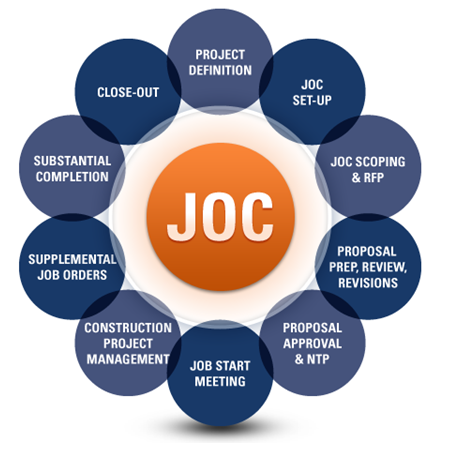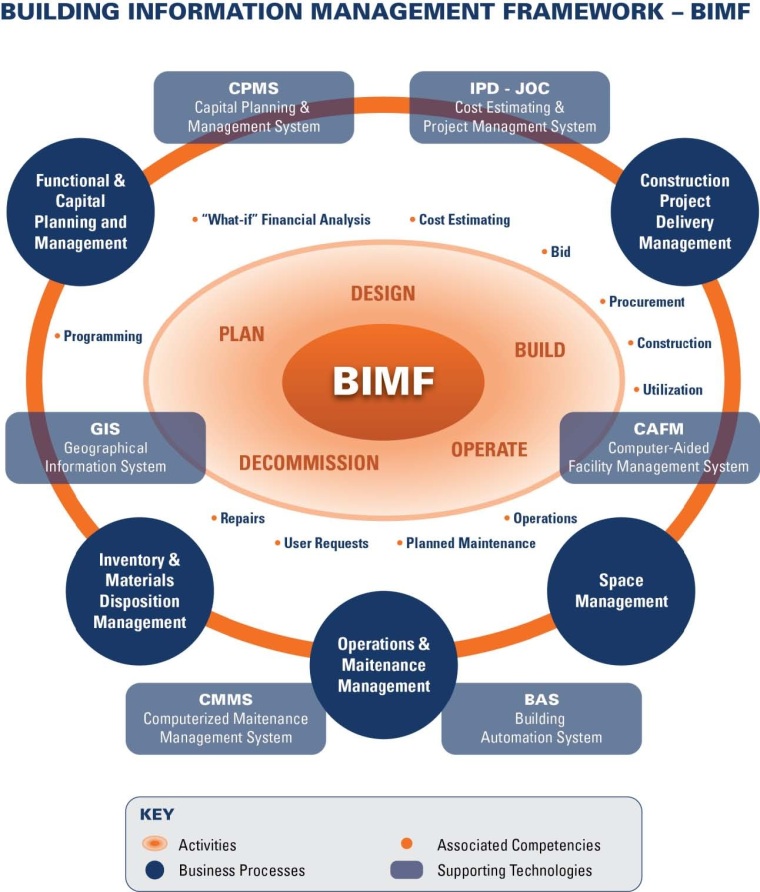In 2010 the amount of data collected since the dawn of humanity all the way up until 2003 was equivalent to the volume produced every two days in the new age of information.
– Eric Schmidt, Chairman of Google
“Big data” — the ability to acquire, process and sort vast quantities of information for timely decision support is critical to the efficient life-cycle management of the built environment. To be certain, big data is NOT just a buzzword, but a term for rich information streaming in from multiple competencies which, leveraged appropriately, can be used collaboratively to drive better outcomes with respect to an organization’s core mission as a member of a larger community.

Leveraging BIG DATA to achieve efficient life-cycle management of the built environment is not a trivial task, nor is it “rocket science”. It does however require the integration of robust business process, especially collaborative construction delivery methods, technology, and a standardized ontology.
Building Information Management, BIM is defined as the life-cycle management of the built environment supported by digital technology (NBIMS – NIBS). Yet far too much emphasis to date has been upon the 3D visualization component of BIM vs. collaborative construction delivery methods, a standardized and robust ontology, and the use of open cloud computing technologies. These are far more important than 3D visualization when it comes down to improving how we improve total cost of ownership with respect to the built environment from both economic and environmental perspectives. The world is not flat, so why are out business processes within the AECOO (Architecture, Engineering, Construction, Operations, Owner) linear and static?
Life-cycle management is on ongoing, dynamic process… actually the integration multiple ongoing/dynamic processes, with each having its own, yet inter-related “cycle” of planning, procuring, constructing, operating, and reusing.
Using Big Data for life-cycle facility management is NOT just about technology. In point of fact, technology, process, people, and ontology must be viewed as inseparable and ever changing. Considering “ripple effect” of every decision is central to life-cycle management, thus “what-if” decision support systems are equally important.
The new “rules of engagement” require a more “holistic” perspective of all stakeholders.
Thus BIM far more “about” the creation, sharing, and use of Big Data than it is 3D visualization and pretty pictures.
So, how do we get from “A”, where we are now, to “B”, a more collaborative, transparent, and productive approach to managing the built environment?
1. Focus on process – the construction delivery method drives success/failure more than any other single component. Collaborative construction methods such as Integrated Project Delivery – IPD, and Job Order Contracting – JOC, also referred to as IPD-lite, are examples of proven, transparent, and performance based approaches.
2. Robust Ontology – the use of standardized terms, definitions, and data architectures are critical to enabling transparency, collaboration, and reducing waste. For example the use of standardized cost databases, such as RSMeans, and associated Uniformat/Masterformat…and eventual OMNICLASS frameworks as the foundation for development is one of several key considerations.
3. Leverage Technology – technology is a enabler, and not an a solution. Technology can, however, cause disruptive change to fundamental business processes. It is critical to adopt technology that is in concert with core strategies and dismiss those that are in conflict. For example, open cloud computing platforms that promote collaboration, scalability, information permanence and reuse are enablers, while dated monolithic software programs and even traditional relational databases should be seriously evaluated.
via http://www.4Clicks.com – Premier cost estimating and efficient project delivery software solutions for JOC, SABER, IDIQ, MATOC, SATOC, MACC, POCA, BOA, BOS … featuring an exclusively enhanced 400,000 line item RSMeans Cost Database, visual estimating/automatic quantity take off ( QTO), and collaborative contract/project/document management, all in one application. Our technology is currently serving over 85% of United States Air Force bases and rapidly growing numbers of other DOD and non-DOD (United States Army Corps of Engineers, Army, GSA, Homeland Security, VA..) federal departments/agencies, as well as state/county/local governments, colleges/universities, healthcare, and airports/transportation. RSMeans Strategic Partner













